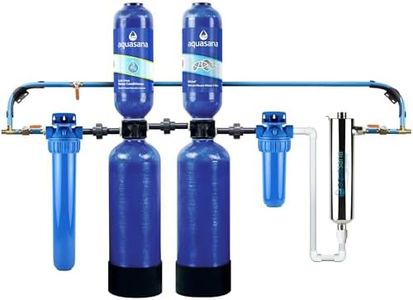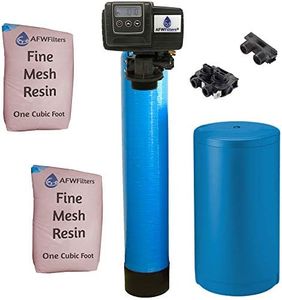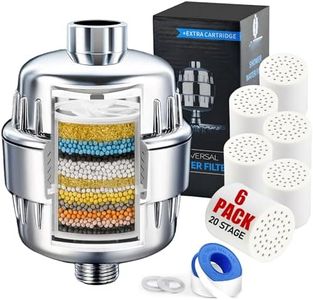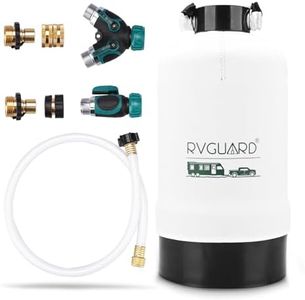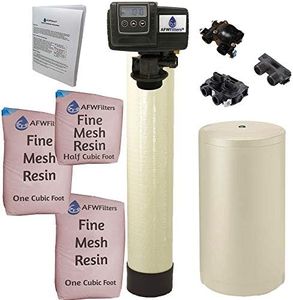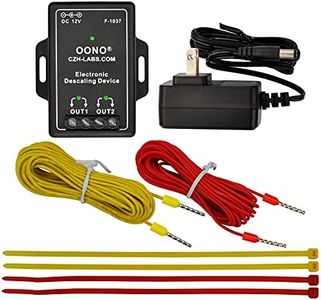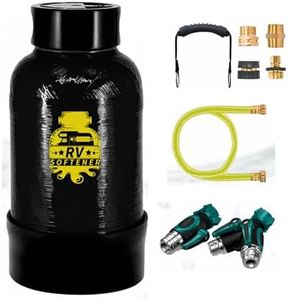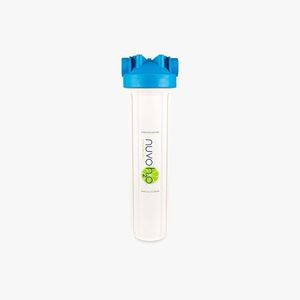We Use CookiesWe use cookies to enhance the security, performance,
functionality and for analytical and promotional activities. By continuing to browse this site you
are agreeing to our privacy policy
10 Best Water Softener
From leading brands and best sellers available on the web.By clicking on a link to a third party's website, log data is shared with that third party.
Buying Guide for the Best Water Softener
Choosing the right water softener is important for keeping your home's water clear of minerals like calcium and magnesium that can cause scale buildup, damage appliances, and make soap less effective. The right water softener can protect your plumbing, improve your laundry results, and leave your skin feeling better after showers. To find the best option for your household, you'll need to match your water hardness, family size, and usage habits with the right features and capacity.Grain CapacityGrain capacity tells you how much hardness a softener can remove before it needs to regenerate (clean itself). This is important because too low a capacity means you'll need to recharge the system more often, while too high a capacity may increase water and salt use unnecessarily. Grain capacities generally range from around 16,000 to 80,000 or more. Small households (1-2 people) with mild hardness typically fit into the lower end, medium households (3-5 people) and average hardness go for mid-range, while large households or hard water should consider higher capacities. To find your fit, estimate your household's daily water usage and local water hardness, and then choose a model that can handle that load comfortably between regenerations.
Regeneration MethodRegeneration is how the softener flushes out minerals it has collected. There are mainly two types: time-initiated (set to regenerate at specific intervals) and demand-initiated (regenerates based on actual water use). Time-initiated is simpler but can waste water and salt if your usage varies. Demand-initiated is better for efficiency, adapting to your water use automatically. For most people, demand-based systems save resources and require less attention, especially if your water use changes day to day.
Salt-Based vs Salt-FreeTraditional salt-based softeners remove minerals and replace them with sodium. Salt-free systems, on the other hand, use different methods (like conditioners or filters) to prevent minerals from sticking but might not reduce hardness in the same way. Salt-based is proven more effective for true softening but needs regular salt additions. Salt-free systems have lower maintenance but are better for people wanting to avoid salt or for areas where softening regulations are strict. Your preference may depend on your health needs, maintenance willingness, and how much scale prevention you need.
Control Valve DesignThe control valve manages water flow and regeneration cycles. Digital or programmable valves let you set precise schedules and monitor system status, providing convenience and customization; mechanical valves are simpler and often easier to maintain. If you like having more control and flexibility, digital controls are worth considering, especially for households with varying water consumption. If you prefer reliability and less complexity, a mechanical valve is easier to operate and fix.
Size and Installation RequirementsPhysical size matters because you need enough space to install the softener near your main water supply. Some softeners are compact for tight spaces, while others need more room, especially high-capacity models. Check your available space, see if you need an outdoor or indoor system, and whether you prefer a unit with an all-in-one tank or separate brine and resin tanks. Also, consider installation difficulty: some models are user-friendly, while others require professional plumbing help. Assess your available spot, and your comfort level with installation, before choosing.
Certifications and WarrantyLook for third-party certifications (like NSF or WQA) to ensure the softener effectively reduces hardness and meets safety standards. A reliable warranty protects your investment and shows manufacturer confidence. The length and coverage of the warranty can differ, so check what parts and labor are included. If you want peace of mind and assurance, prioritize units with clear certifications and generous warranties.
